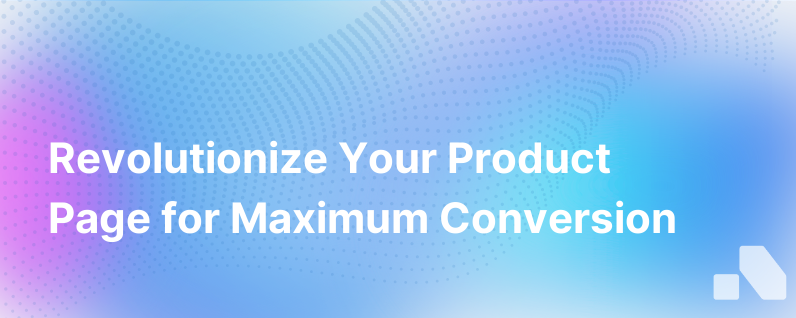
In the hyper-competitive digital ecosystem, an effective product page can really set your business apart. The difference between an average and a great product page is profound, perhaps far more significant than even the best marketers realize.
Your product page acts as the final frontier that separates browsing consumers from eventual customers. Therefore, it needs to combine numerous elements including design, functionality, and content that work in harmony to create a compelling experience. The layout, the product images, the descriptions, the reviews – everything needs to be spot-on.
In this post, we will delve into the essential elements that make up a solid product page and how they contribute to better sales and healthier bottom lines.
What Makes a Product Page?
Traditionally, a product page is where most online shoppers make their decision to either abandon the product or add it to their cart. As a general thumb rule, a superior product page should be able to offer the following attributes:
- Informative: It should provide all the necessary information about the product.
- Engaging: It should be aesthetically pleasing and offer an engaging user experience.
- Persuasive: It should convince customers to hit that 'buy now' button.
In essence, product pages act as your digital salespeople.
Core Components of a Product Page
The following are the key components that collectively contribute to creating an engaging and high-converting product page:
High-quality Product Images: In online shopping, customers can't physically touch or examine a product, making images a critical selling point. Provide multiple photos from various angles and in varied contexts, ensuring they are high-resolution, and represent the product accurately.
Informative Product Descriptions: Descriptions should be succinct yet comprehensive, addressing all potential customer queries. Highlight the benefits of the product, rather than merely listing features. If possible, incorporate storytelling to make it more engaging.
Call-to-action (CTA) Buttons: CTAs - such as "Add to Cart" and "Buy Now" - must be clear, vibrant, and ideally placed above the fold. The color, size, and even the font of the buttons matter immensely.
Customer Reviews and Ratings: Transparency is key in building trust, and reviews provide that. Many shoppers read reviews before purchasing to validate the product's worth. Reviews not only contribute to SEO but also cater to customers' need for social proof.
Stock Availability and Delivery Details: Displaying stock availability reassures customers they can actually purchase the product. Meanwhile, providing estimated delivery dates allows them to plan ahead.
Return and Warranty Information: Clearly state the return policy and warranty details. Customers appreciate knowing they have safety nets if they change their mind or encounter issues.
Up-sell and Cross-sell Options: These are great ways to increase average order values. 'Customers also bought' or 'You may also like' sections can entice shoppers to explore and buy more.
Product Videos: Videos can effectively demonstrate product usage and provide a comprehensive understanding of the product. They also help in better engagement and retention.
Best Practices to Build Effective Product Pages
Here are some advice on refining product pages:
-
Optimize for Mobile: Mobile shopping is increasingly becoming the norm. Ensure your product pages are mobile-friendly, providing a smooth shopping experience on smaller screens.
-
Include FAQs: Frequently asked questions can save customers time and effort for common inquiries about the product.
-
Highlight Customer Testimonials: Skillfully placed testimonials can reinforce the positive aspects of your product.
-
Show Security Badges: They help build trust and let customers know their transaction will be safe and secure.
-
Leverage Social Media: Social share buttons provide an easy way for customers to share your products on their networks, increasing your visibility.
-
Implement Live Chat: Offering live support on product pages can help to answer immediate customer queries and boost conversions exponentially.
Conclusion
A well-designed product page is a crucial focal point in the buyer's journey, potentially tipping customers from undecided to decided. Embedding important elements creatively and methodically can maximize conversions and ultimately augment your revenues.
Remember, no page is truly perfect. Continuously testing and researching will allow you to understand your customers better and optimize your product pages for higher sales.
Tools like Aomni can help streamline this process, offering actionable insights that can improve your product page performance, resulting in better engagement and overall customer satisfaction.